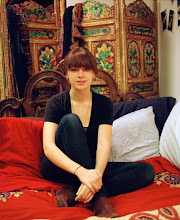The necessity for realistic artwork is only obsolete if you view the sole purpose of realistic art as documentary. The ability to produce convincing realism still marks a talented visual artist. Imagine a realist painter and a photographer who both try to capture the beauty of a scene by portraying it as truly possible. Each uses a different medium. The painter is no more likely to abandon his art in favor of photography than the photographer is to put down his still camera for a medium that would yield more accurate documentation.
Perhaps the viewer of art will chose the more realistic medium, and so the painter will lose an audience to photography, and in this evolutionary way the traditional artists will thin out and eventually be extinguished. But to accept such a viewpoint would be cynical of the audience. I do not think those who view are and love are are more attracted to one medium because it promises a truer interpretation of the world. Even before the camera was invented there existed varying levels of realism in art. Realist and trompe l'oeil works were able to coexist with sculpture throughout history. Arguable, sculpture is more useful as a documenting tool though the value of realistic painting as an art never lost significant ground to sculpture.
Art is not about documentation, it is about truth. One may equate most accurate and most true, but that would be a travesty. Capturing the truth of a scene isn't necessarily about capturing how it looks--more importantly it is translating the emotions that are evoked by some subject matter, and that is not always done by portraying a scene accurately. In fact the artist's job is often to highlight an emotional part of the subject matter--something that would be absent if the subject were to be exactly replicated.





